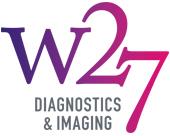It is important to get an accurate diagnosis if you are experiencing pain. Without this it is impossible for your doctor to treat the source of your pain effectively.
Diagnostic injections, such as arthrogram injections, are used to pinpoint your pain when trying to assess for potential damage or injury to the structures on the inside of your joints (intra-articular).
They are used alongside scans like MRI and CT, because while a conventional scan can provide images of a wide range of musculoskeletal problems, arthrogram injections help to more accurately assess other small structures inside the joint that may not be easily seen otherwise.
A diagnostic arthrogram injection can help your doctor to see exactly where the pain is coming from and what is causing it.
Diagnostic Injections – How they work

Diagnostic injections work by injecting anaesthetic and contrast dye into your painful joint. You will be given a local anaesthetic to numb the skin before the needle is inserted. A special type of X-ray technique called fluoroscopy, which provides moving images of the inside of your body, or an ultrasound scan is then used to guide the injection to the correct place.
Once the needle is properly located you will be injected with a mix of anaesthetic and contrast dye. Occasionally you may also be given steroids at the referring clinician’s request.
By numbing a specific area in this way, we are able to pinpoint your pain response which enables the doctor to diagnose exactly what is causing the pain.
What it’s used for
Diagnostic injections can by used to evaluate the surface of your cartilage, joint linings, tendons, ligaments and bones. There are different types of diagnostic injection for different parts of the body – such as in the shoulder, hips, wrists, elbows, knees and ankles. All of them work using the same principles.
Diagnostic injections are used routinely and are a safe and effective procedure. They carry a small risk of infection as with any other joint injection otherwise most patients tolerate the procedures well with minimal other side-effects. Your W27 Radiologist can go through this with you during the consent process.
What to expect
A diagnostic injection is carried out by a radiologist and normally takes around 25 minutes from start to finish. It is performed under local anaesthetic which means you will be awake throughout but will feel minimal pain. You will lie on a bed and there will be a consultant radiologist, radiographer and healthcare assistant in the room with you.
A sterile solution will be used to clean your skin before you are given an injection of local anaesthetic to numb the skin over your joint. Once the anaesthetic has taken effect the needle will be pushed carefully into your joint. You may feel a slight pushing sensation. The syringe will be removed while the needle remains in position.
Next a contrast dye will be injected into your joint. The radiologist will watch X-ray or ultrasound images to ensure that the needle is correctly positioned in the joint before injecting the dye +/- steroid and local anaesthetic. You may experience a heavy or tight sensation in your joint but this will quickly subside. The syringe is then removed and you will be transferred to the MRI (or CT) scanner for your scan.
Afterwards your joint may feel slightly numb for a few hours. It is important to continue using it as normal to prevent stiffness but you should avoid heavy lifting or strenuous exercise for 24-48 hours and it is advisory not to drive or operate heavy machinery for 24 hours.
You can normally go home within an hour of the procedure. Once the anaesthetic wears off you may notice a temporary increase in pain symptoms which may last for a few hours. Your doctor will discuss the findings of the diagnostic injection with you and this information will be used to formulate a treatment plan.
For more details about diagnostic injections contact us for further information.








